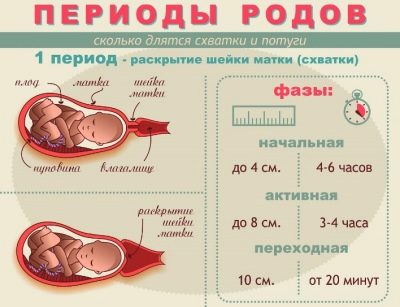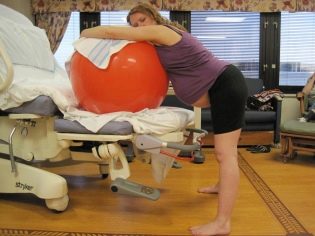What are the sensations like?
Even very calm and well-balanced women have a completely natural anxiety before giving birth. No matter how memorized the sequence of contractions, the frequency and duration of courses for expectant mothers, fear still remains and it is associated with uncertainty. What fights will there be, how much will it hurt, with what can they be compared? We will give answers to these questions in this article.
What it is?
The contractions are the process of tension of the muscles of the uterus, in which the opening of the cervix occurs. The walls of the uterus at this time exert pressure, under which the baby assumes the correct position based on its presentation, optimal for passing through the birth canal after the cervix has fully opened.
Feelings during contractions can be different, and largely depend on the period of childbirth, the individual pain sensitivity of the woman. Those who sell childbirth methods without pain are somewhat cunning, since there is no fight without pain. Another issue is that some women tolerate pain relatively easily, while others are worse.
The first contractions are rare and short. They are called latent. They last no more than 8-10 hours. This is the longest period of childbirth, and the sensations of pain are painful.
This is followed by a period of active contractions, when they are repeated every 5 minutes and last up to a minute. This is more painful, but the disclosure of the cervix at the end of the period is about 7 centimeters, and there remains very little before the attempts. After 3-5 hours of active contractions, transitional ones occur, with their disclosure increasing to 10-12 centimeters, the uterus opens completely. These are the most tangible contractions, which are protracted, lasting about a minute each and are repeated after a minute, maximum two. This period lasts from half an hour to an hour and a half and turns into attempts, when the baby begins its journey through the birth canal of the mother.
Recognizing these labor pains is easy. They differ from false and training in that they repeat at regular intervals of time, develop and strengthen.
What to compare?
Often women compare the initial contractions with the pain during menstruation, with the ebb and flow of the tide of the sea. Indeed, contractions are similar to this in their rhythm - the uterus stiffens and relaxes. Spasms occur at regular intervals, in between, you can relax. Naturally, the longer the rest period is at the very beginning, the easier it is to endure a short spasm.
With monthly pains, labor pains are similar only to localization. A breaking pain arises when the uterus is toned in the back, gently descends and binds the lumbar region, lower abdomen, and spreads throughout the abdominal wall. Then, in the reverse order of relaxation.
Pain - what is it?
It is believed that pain during childbirth has a psychogenic origin, because in the uterus there are no nerve endings. Specialists call over-stimulation of the nervous system the main cause of painful contractions. Therefore, women who remain calm are well aware that it is at one time or another that the childbirth occurs in her body, they give birth easier and faster, and claim that she did not experience transcendental intolerable pain.
It should be noted that pain is a very subjective concept.The fact that it is unbearably painful for one woman in labor is quite tolerable for another. It all depends on the pain threshold - the individual threshold beyond which the human nervous system simply ceases to perceive pain as pain.
In world practice, there was a proposal to measure the pain in the dol. These conventional units allow you to determine the threshold values of pain from a particular impact, but, alas, only for a specific person. On average, pain at the very peak of childbirth, during the transition from contractions to attempts, is estimated at 9-10.0 dol.
In order to understand whether this is a lot or a little, a woman needs to know that the average statistical limit of patience, beyond which the perception of pain per se is 10.5 dol, that is, birth pain is at the limit of human capabilities.
The experiment was conducted in 1948 in one of the American clinics, where 13 women in labor poured boiling water on the skin in the interval between contractions. It was then that it turned out that the burn, which was previously considered the most painful, is not at all like this - the birth will be more painful. Many women did not respond to a drop of boiling water after a contraction, but not all. And this proves that the pain threshold is different. Those who felt the hot water had pain that was below 10 dol, although they were at the same stage of the labor process.
There is no consensus about these units, and there is an assumption that they are so subjective that they cannot be the only measure of pain. If we talk about a scale on which we can estimate the generic pain and pain in real contractions, it is easier to focus on the usual 10-point scale, adjusted (solid!) For individuality.
For example, surveys conducted in several clinics in France, Great Britain and Canada, when women were asked to describe pain in numbers after childbirth, showed that many estimate the initial stage of labor at 0-2 points. Active contractions received higher grades of women giving birth - 5-7 points. Transitional bouts - up to 8-10 points. But after delivery, an hour later, women rated their well-being at 1-2 points on a ten-point scale of pain.
If you want to determine your own pain threshold before childbirth, you should ask any anesthesiologist to test you with a special algesimeter device - this is the only more or less accurate way to understand what your pain sensitivity is. All people are divided into four types of pain sensitivity and susceptibility.
What influences perception and how to facilitate?
As already mentioned, the whole thing in the nervous system of a woman. Pain is a manageable process, which is why yogis and special-purpose soldiers are able to regulate their own pain, walk on the glass, and not feel the pain from a burn or cut. A woman, of course, is not a yogi and not a special forces intelligence officer, but to learn how to correctly perceive pain and reduce it is absolutely possible for any woman in labor.
For a long time, this was the basis for explanatory work, which in Soviet female consultations was carried out with all pregnant women. The development of a method for reducing pain belongs to Soviet scientists; it formed the basis for exclusively all international methods for reducing pain.
The right mood includes auto-training, meditation training, self-hypnosis, breathing techniques and muscle relaxation techniques. Feeling more easily helps calm, confidence that the female body has enough natural wisdom and strength to give birth to a child. It's true.
From the first contractions, you need to move, do not lie down, inhale deeply and exhale slowly, it will help you relax, and the relaxed muscles of the uterus will be reduced less painfully. If the contractions become active, a change of poses will help, it is more convenient for some to stand, for some it is to sit on a fitball, someone walks or stands on all fours. Strong contractions are better “to breathe” finely (“like a dog”), and during attempts it is important to get air and hold your breath, “pushing” the baby’s chest out.
Fear, panic, cry, groans, fussing spontaneous breathing, lack of contact with the medical staff intensify the pain (the woman does not listen to the requests of the obstetrician, does not fulfill them).
Reviews
There are a lot of reviews on the Internet about how you can compare labor pains. Most women compare them with familiar sensations, which are approximately the same for all women of the fair sex with menstruations, but emphasize that the contractions are much stronger. You can find such descriptions as the tension of the invisible cobweb in the stomach during the bout, like clenching a fist.
Some argue that the contractions were almost unnoticed - by the time they arrived at the maternity hospital, when the pain increased, the disclosure was almost complete. But such a scenario is more characteristic of multiplying. For women who give birth to their first child, this difficult period is felt brighter.
Some find it difficult to describe what contractions look like, because they were under stress and cannot compare those experienced sensations with anything that can be described in words in principle.
See what the bout feels like, see the next video.






















